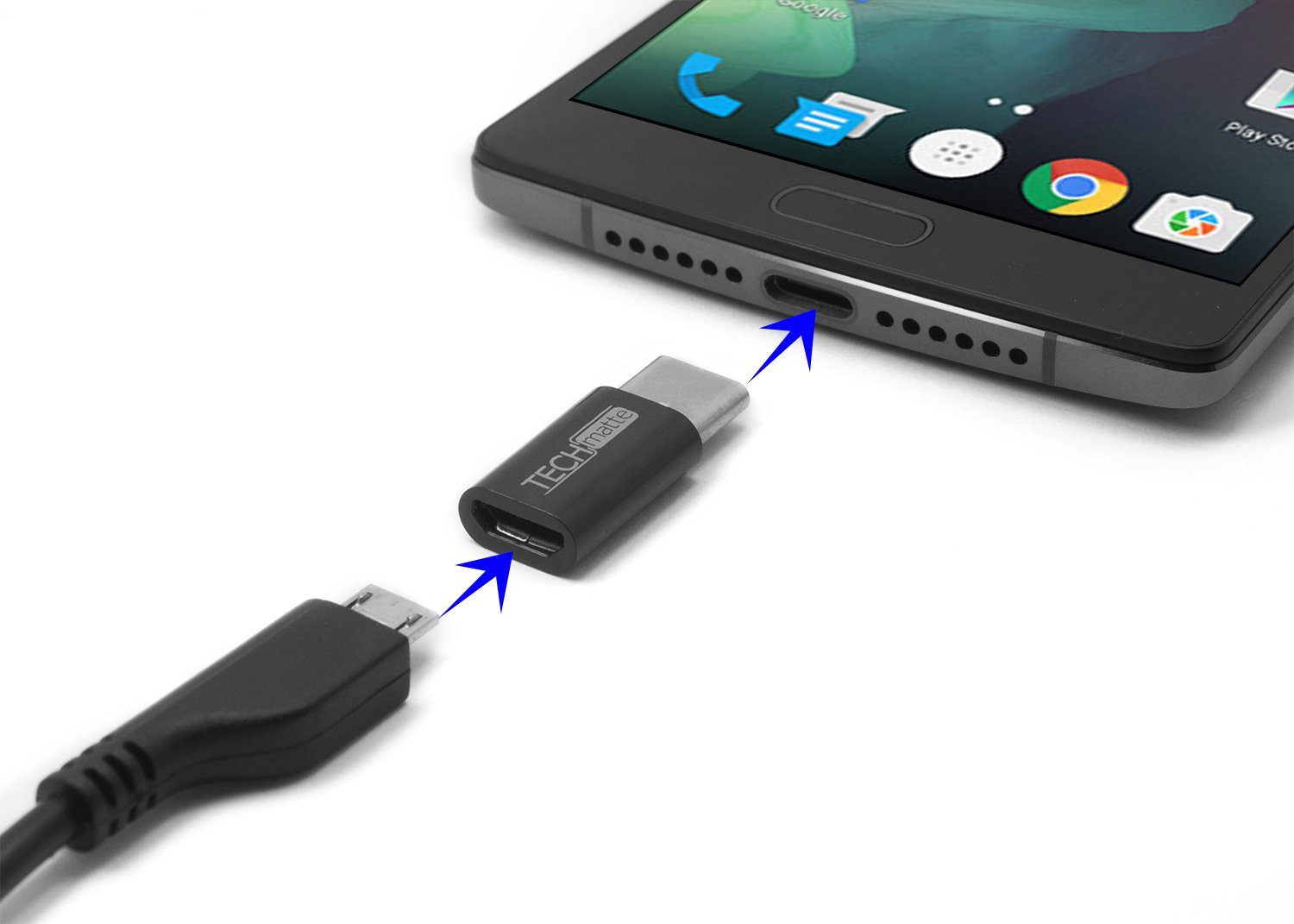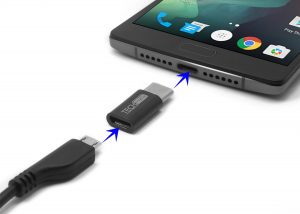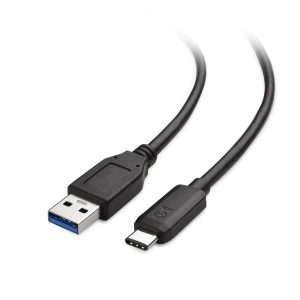Table of Contents
Why we care about USB-C
Buying cables can be a seemingly random task where price often dictates what you purchase. There are so many brands and variations of cables on the market and few people know how to distinguish high quality cables from poor quality ones. Manufacturers can make all sorts of claims about their cables without consumers being cable to verify those claims before purchase, and even then most people will only be able to spot superficial differences. With the arrival of USB Type-C (also known as USB-C or USBC), there is even less awareness of what a good quality cable should be like or what it should do. The concern is the proliferation of poorly implemented USB-C cables that don’t comply with the new USB-C specification. Consumers will be unable to take advantage of new USB-C benefits, or worse, damage their devices and batteries.

USB Connection Types
USB-C is only as good as the cables and host devices that properly utilize the technology. We want to hold manufacturers to their word that their cables are USB-C Compliant. To do this we have researched nearly a hundred cables to see which ones have met the USB Type-C specification. We were inspired by Google Engineer Benson Leung and the awareness he has generated in regards to cables flouting the USB-C specification.1 He unfortunately found that many cables are not compliant and may react unpredictably and even damage the batteries of your devices. Buying cables can be a crapshoot and you shouldn’t have to worry about the cables you plug in.
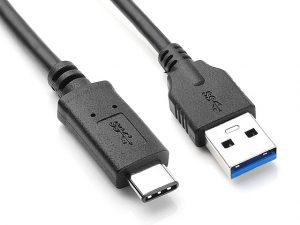
USB-C to USB-A cable
What is USB Type-C?
The technology world is in the midst of another USB shift, the USB Type-C connection. More simply known as USB-C, it is being heralded as the future of USB and cable connectivity in general. It is a specification for a reversible physical plug that is meant to streamline and future-proof peripherals and devices. Even when the USB specification gets updated in the coming years, the same USB-C physical connection and design will be used. It measures 8.4 mm by 2.6 mm and is designed for both small and large devices while minimizing the possibility of being damaged.
Although it was released about the same time as the USB 3.1 specification, it is distinct from it. There is a decoupling of USB-C and the USB 3.1 standard which can be confusing. A device can have a USB-C port but only follow USB 2.0 protocols, or it could have a USB-A port and follow USB 3.1.
Reversible: Reversible plug orientation unlike micro USB and other USB formats.
Backwards compatible: Backwards USB compatibility with legacy USB ports by using an adapter. For example, a micro USB to USB-C adapter.
Speed: USB-C 2.0 cables are capped at 480 Mbit/s and 60W of power transfer. USB-C 3.1 cables are capped at 10 Gbit/s and 100W.
USB 3.1: Type-C does not equal USB 3.1, it is a connector type that is supplement to the USB 3.1 specification. Phones and other devices may not need the additional chipsets for USB 3.1 speeds (10 Gbit/s transfer speeds) as well as making the cables hotter and more power hungry.
USB Power Delivery: One of the biggest benefits to USB-C is that it supports scalable and bidirectional power delivery. That means it can both send or receive power and data at the same time. While USB-C does not guarantee USB power delivery (which is a specific protocol/hardware combination that allows power capacity up to 100W), the technology allows manufacturers to make bus-powered devices so they won’t have to build separate power adapters in the future. Devices like the Macbook and the Chromebook Pixel charge solely through a USB-C 3.1 cable. The key is that both the host device and the cable support the USB Power Delivery protocol.
USB-C does not mean USB 3.1: You can have USB-C connectors with USB 2.0 specifications, and USB 3.1 devices that use legacy USB ports such as USB-A. However, without USB-C, power is limited and does not support alternate modes.2
USB versions
USB 1.1 (1998): The first USB specification that was widely adopted after correcting bugs found in USB 1.0. Max speed of 12 Mbit/s.
USB 2.0 (2000): Max speed of 480 Mbit/s and max power output of 2.5V 1.8A.
USB 3.1 Gen 1 (2008): Max speed of 5 Gbit/s and max power output of 5V 1.8A. USB port is usually blue. Renamed to USB 3.1 Gen 1 in 2015. Formerly known as USB 3.0.
USB 3.1 Gen 2 (2013): Max speed of 10 Gbit/s and max power output of 20V 5A.3 It is important to note that all USB 3.1 cables support 10 Gbit/s transfer but the host device and port has to support those speeds.
Non-compliant USB-C cables
USB-C Compliant means it meets USB Type-C specifications including having a 56kΩ resistor that limits charging to safe levels. Non-compliant cables and adapters could damage your charger and device battery by pulling more power than it can handle (often using a 10kΩ pull-up instead). This is only a concern on legacy port adapters like USB-A or USB-B to USB-C. These cables don’t support 3A fast charging but a non-compliant cable will still attempt to fast charge even though it is unsupported. The device will think it is connected to a 3A power source and will draw more power than the charger is designed for. However, if the cable is USB-C Compliant, it will recognize the legacy port adapter and negotiate a proper charging level of, for example, 1.7 A.
USB-C to USB-C cables do not need to worry about this because they have straight pass through charging and shouldn’t have a resistor anyways. As long as you’re plugged into a 3A charger you will get safe fast charging.
Testing USB Type-C cables
We researched nearly 100 USB-C adapters and cables through online reviews4 and through our own testing to verify whether cables are USB-C Compliant or not. Specifically, we used a Nexus 6P and the Android CheckR app to test whether cables are compliant or not. If you have already purchased a USB-C cable or adapter you can verify whether it is compliant or not yourself. Keep in mind that the CheckR app is not designed to check USB-C to USB-C cables because they are already compliant and don’t need the same requirements for legacy adapters.
Best micro USB to USB-C adapter
The best micro USB to USB-C adapters both come in two packs. Both adapters from TechMatte5 and CableCreation6 have a 56kΩ pullup resistor which negotiate a correct charging level. If you want a direct USB-C adapter connection (no cable), then we recommend buying a 2 in 1 pack from TechMatte or Anker. If you prefer an actual adapter cable, then we recommend the CableCreation USB-C adapter cable which is 14cm long. And if you want to be even more savvy, you can purchase a convenient 2-in-1 combo adapter cable from Fcolor (USB-A to USB-C and micro USB).
| Brand | USB-C Compliant | Speed | Length | Connection |
|---|---|---|---|---|
| TechMatte | Passed | n/a | 0 | Micro to USB-C |
| Kupx | Passed | n/a | 0 | Micro to USB-C |
| Fcolor | Passed | 2.0 | 1.0 m | USB-A to to USB-C / Micro |
| iOrange-E | Passed | n/a | 0 | Micro to USB-C |
| JOTO | Passed | 3.1 | 0 | Micro to USB-C |
| CableCreation | Passed | 3.1 | 0.15 m | Micro to USB-C |
| Otium | Passed | 2.0 | 0 | Micro to USB-C |
| Coween | Passed | 2.0 | 0 | Micro to USB-C |
| Tronsmart | Passed | 2.0 | 0 | Micro to USB-C |
| Xiaomi | Passed | 2.0 | 0 | Micro to USB-C |
| Nekteck | Passed | 2.0 | 0 | Micro to USB-C |
| Anker | Passed | n/a | 0 | Micro to USB-C |
| OnePlus | Failed | n/a | 0 | Micro to USB-C |
| IO Crest | Failed | n/a | 0 | Micro to USB-C |
| Aomax | Failed | 3.1 | 0 | Micro to USB-C |
| VicTsing | Failed | 3.1 | 0 | Micro to USB-C |
| Celltronix | Failed | 3.1 | 0 | Micro to USB-C |
| Wekin | Failed | 3.1 | 1.0 m | Micro to USB-C |
| Karnotech | Failed | 2.0 | 1.0 m | USB-C to USB-A / Micro |
| GOOQ | Failed | 2.0 | 0 | Micro to USB-C |
| Arrela | Failed | 2.0 | 1.0 m | USB-C to USB-A / Micro |
| BESTEK | Failed | n/a | 0 | Micro to USB-C |
Best USB-C to USB-C cables
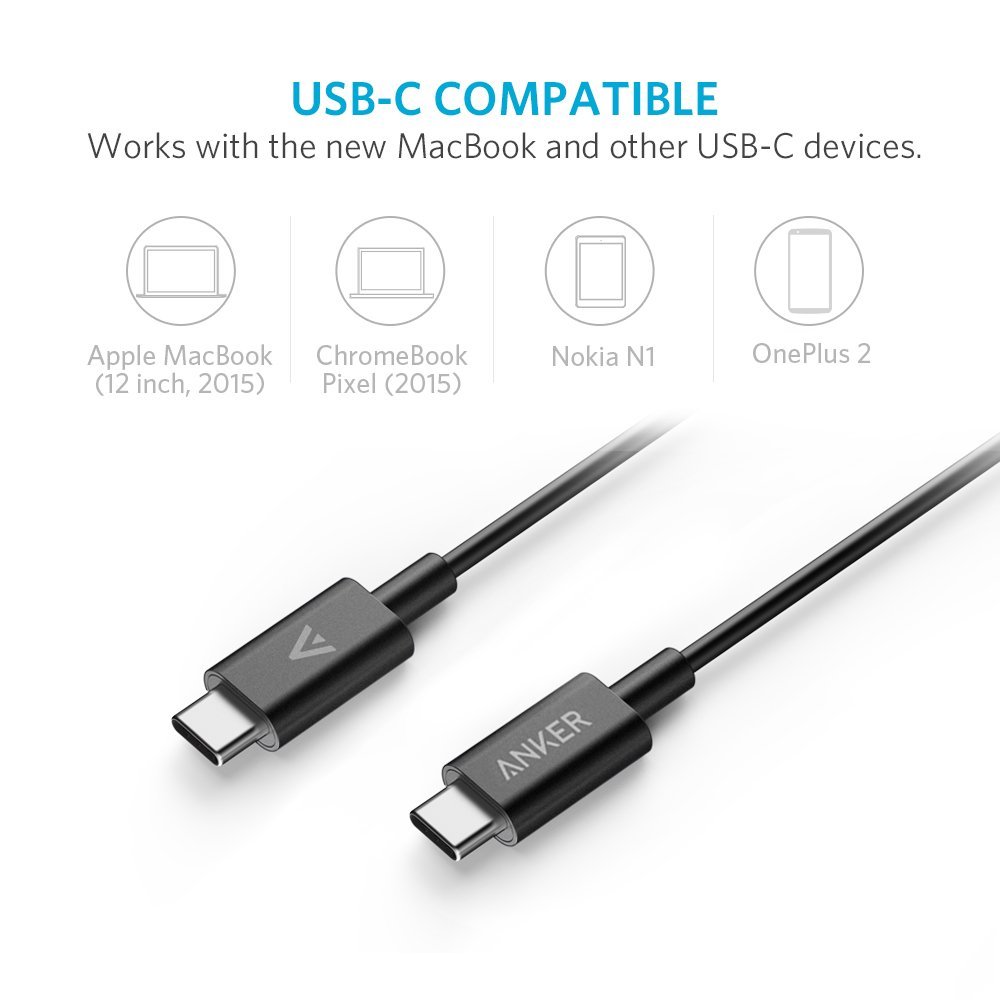 USB-C to USB-C cables support straight pass through charging and are already USB-C compliant by design. There shouldn’t be a resistor on any of the CC pins like the legacy port adapters. As long as the wall plug charger you’re using is 3A then fast charging is supported. You simply need to know whether you want USB 2.0 or 3.0 cables, which will mostly only effect data transfer speeds — charging will be exactly the same speeds.
USB-C to USB-C cables support straight pass through charging and are already USB-C compliant by design. There shouldn’t be a resistor on any of the CC pins like the legacy port adapters. As long as the wall plug charger you’re using is 3A then fast charging is supported. You simply need to know whether you want USB 2.0 or 3.0 cables, which will mostly only effect data transfer speeds — charging will be exactly the same speeds.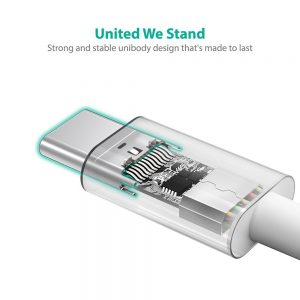 For the best legacy USB-C 2.0 cables we recommend either the Anker PowerLine (1 meter) or the iOrange-E braided cables (2 meters). For USB 3.1 cables, we would purchase either Black Squid (1 meter) or RAVPower (2 meters) cables. We recommend these brands because they all produce high quality cables with molded ends and overall premium construction. Their high durability and flexibility, fast charging speeds, USB-C compliance and good customer service make them stand out among the huge competition.
For the best legacy USB-C 2.0 cables we recommend either the Anker PowerLine (1 meter) or the iOrange-E braided cables (2 meters). For USB 3.1 cables, we would purchase either Black Squid (1 meter) or RAVPower (2 meters) cables. We recommend these brands because they all produce high quality cables with molded ends and overall premium construction. Their high durability and flexibility, fast charging speeds, USB-C compliance and good customer service make them stand out among the huge competition.
Although more than double the price of the other cables, Google’s USB Type-C to Type-C Cable is excellent at 1.8 meters. We still recommend one of the above brands we suggested, but Google always has reliable quality control and you’ll be happy with the cable. Just remember that their USB-C cable is only USB 2.0, so while it does support fast charging it doesn’t support USB 3.1 SuperSpeed data transfer (if you need it).
| Brand | USB-C Compliant | Speed | Length | Connection | Price |
|---|---|---|---|---|---|
| Anker | Passed | 2.0 | 1.0 m | USB-C to USB-C | Buy |
| Aukey | Passed | 3.1 | 1.0 m | USB-C to USB-C | Buy |
| Belkin | Passed | 3.1 | 0.9 m | USB-C to USB-C | Buy |
| Black Squid | Passed | 3.1 | 1.0 m | USB-C to USB-C | Buy |
| CableCreation | Passed | 3.1 | 3.0 m | USB-C to USB-C | Buy |
| CableMatters | Passed | 2.0 | 2.0 m | USB-C to USB-C | Buy |
| CableMatters | Passed | 2.0 | 1.0 m | USB-C to USB-C | Buy |
| Passed | 2.0 | 1.8 m | USB-C to USB-C | $25 | |
| iOrange-E | Passed | 2.0 | 2.0 m | USB-C to USB-C | Buy |
| Monoprice | Passed | 3.1, 2.0 | 0.9 m | USB-C to USB-C | Buy |
| RAVPower | Passed | 3.1 | 2.0 m | USB-C to USB-C | Buy |
Best USB-C to USB-A cables
As we are currently in a transition phase as the technology world slowly shifts to the USB-C standard, we must use adapters for our legacy devices and ports. With USB-A found pretty much everywhere in laptops and all sorts of electronics, legacy adapters and cables are going to become increasingly common as we try to connect our new devices with older electronics. In theory, this should be the only point for a very long time where we need these types of legacy adapters until USB-C becomes dominant. This is because future USB specifications will use the same USB-C design but with improved chipsets or protocols.
If you’re looking for a short 1 foot USB-C to USb-A cable, then we recommend a short USB 2.0 braided cable from Cambond or iOrange-E . For a USB 3.0 or higher cable, we suggest checking the full comparison chart below and be sure to only purchase a USB-C Compliant cable or risk damaging your devices.
If you want a female USB-A adapter to male USB-C then look no further than Google’s USB Type-C to USB Standard-A Adapter.
Note: USB A to USB-C cables can only support max current of 2.4A at 5V.
| Brand | USB-C Compliant | Speed | Length | Connection |
|---|---|---|---|---|
| Winplus Tech | Passed | 3.1 | 1.0 m | USB-C to USB-A |
| iOrange-E | Passed | 2.0 | 0.3 m | USB-C to USB-A |
| CableMatters | Passed | 3.1 | 1.0 m | USB-C to USB-A |
| GT Coupe | Passed | 2.0 | 1.0 m | USB-C to USB-A |
| Belkin | Passed | 2.0 | 1.8 m | USB-C to USB-A |
| Tabpow | Passed | 2.0 | 1.2 m | USB-C to USB-A |
| Black Squid | Passed | 3.1 | 1.0 m | USB-C to USB-A |
| RAVPower | Passed | 2.0 | 1.8 m | USB-C to USB-A |
| CableMatters | Passed | 2.0 | 1.0 m | USB-C to USB-A |
| iOrange-E | Passed | 2.0 | 3.0 m | USB-C to USB-A |
| ChoeTech | Passed | 2.0 | 1.0 m | USB-C to USB-A |
| Monoprice | Passed | 2.0 | 1.0 m | USB-C to USB-A |
| VCE | Passed | 3.0 | 1.0 m | USB-C to USB-A |
| Fcolor | Passed | 2.0 | 1.0 m | USB-A to to USB-C / Micro |
| Anker | Passed | 2.0 | 1.0 m | USB-C to USB-A |
| Ankovo | Passed | 2.0 | 2.0 m | USB-C to USB-A |
| iOrange-E | Passed | 3.1 Gen 1 | 2.0 m | USB-C to USB-A |
| Passed | 2.0 | 1.0 m | USB-C to USB-A | |
| Fcolor | Passed | 2.0 | 2.0 m | USB-C to USB-A |
| Cambond | Passed | 2.0 | 3.0 m | USB-C to USB-A |
| RTE | Passed | 3.0 | 1.0 m | USB-C to USB-A |
| Cambond | Passed | 2.0 | 2.0 m | USB-C to USB-A |
| Cambond | Passed | 2.0 | 0.3 m | USB-C to USB-A |
| CableMatters | Passed | 2.0 | 2.0 m | USB-C to USB-A |
| USAMS | Passed | 2.0 | 1.0 m | USB-C to USB-A |
| Anker | Passed | 3.0 | 1.0 m | USB-C to USB-A |
| Aukey | Passed | 3.0 | 1.0 m | USB-C to USB-A |
| BRIDGEGEN | Passed | 2.0 | 2.0 m | USB-C to USB-A |
| StarTech | Passed | 2.0 | 1.0 m | USB-C to USB-A |
| TechMatte | Passed | 3.0 | 1.5 m | USB-C to USB-A |
| Suaoki | Passed | 2.0 | 1.0 m | USB-C to USB-A |
| Tronsmart | Passed | 3.0 | 1.0 m | USB-C to USB-A |
| Orzly | Passed | 3.0 | 1.0 m | USB-C to USB-A |
| JOTO | Passed | 3.0 | 1.0 m | USB-C to USB-A |
| iOrange-E | Passed | 2.0 | 1.8 m | USB-C to USB-A |
| Nekteck | Passed | 2.0 | 1.0 m | USB-C to USB-A |
| Nekteck | Passed | 3.0 | 1.0 m | USB-C to USB-A |
| FRiEQ | Passed | 3.0 | 1.0 m | USB-C to USB-A |
| TeckNet | Passed | 3.0 | 1.0 m | USB-C to USB-A |
| OKPOW | Passed | 3.0 | 1.0 m | USB-C to USB-A |
| Boot Remedy | Passed | 3.0 | 1.0 m | USB-C to USB-A |
| USAMS | Failed | 3.0 | 1.0 m | USB-C to USB-A |
| Winplus | Failed | 3.0 | 1.0 m | USB-C to USB-A |
| iKNOWTECH | Failed | 3.0 | 1.0 m | USB-C to USB-A |
| Spigen | Failed | 3.0 | 1.0 m | USB-C to USB-A |
| Bestek | Failed | 3.0 | 1.0 m | USB-C to USB-A |
| Tenswall | Failed | 3.1 | 1.0 m | USB-C to USB-A |
| Kanex | Failed | 3.0 | 1.2 m | USB-C to USB-A |
| Lemeng | Failed | 3.0 | 0 | USB-C female to USB-A |
| IO Gear | Failed | 2.0 | 1.0 m | USB-C to USB-A |
| Pleson | Failed | 2.0 | 1.0 m | USB-C to USB-A |
| Rankie | Failed | 2.0 | 1.0 m | USB-C to USB-A |
| Elegiant | Failed | 2.0 | 1.0 m | USB-C to USB-A |
| Yoobao | Failed | 2.0 | 1.0 m | USB-C to USB-A |
| CableUnion | Failed | 2.0 | 1.0 m | USB-C to USB-A |
| NewLOBO | Failed | 3.0 | 1.0 m | USB-C to USB-A |
| LightningKID | Failed | 2.0 | 1.0 m | USB-C to USB-A |
| DHTS | Failed | 3.0 | 1.0 m | USB-C to USB-A |
| Exuun | Failed | 3.0 | 0 | USB-C female to USB-A |
| Getron | Failed | 3.0 | 1.0 m | USB-C to USB-A |
| TROND | Failed | 3.0 | 2.0 m | USB-C to USB-A |
| LightningKID | Failed | 2.0 | 1.0 m | USB-C to USB-A |
| Yoozon | Failed | 2.0 | 1.0 m | USB-C to USB-A |
| Hapurs | Failed | 3.0 | 2.0 m | USB-C to USB-A |
| Macally | Failed | 2.0 | 1.8 m | USB-C to USB-A |
| Inateck | Failed | 3.0 | 1.0 m | USB-C to USB-A |
| VicTsing | Failed | 3.0 | 1.0 m | USB-C to USB-A |
| aLLreli | Failed | 3.0 | 1.0 m | USB-C to USB-A |
| PECHAM | Failed | 3.0 | 1.0 m | USB-C to USB-A |
| Sparin | Failed | 3.0 | 1.0 m | USB-C to USB-A |
| Noot | Failed | 3.0 | 1.0 m | USB-C to USB-A |
| Karnotech | Failed | 2.0 | 1.0 m | USB-C to USB-A / Micro |
| IPEGTOP | Failed | 2.0 | 1.0 m | USB-C to USB-A |
| Matley Tech | Failed | 2.0 | 6 inches | USB-C to USB-A |
| Ourkens | Failed | 2.0 | 2.0 m | USB-C to USB-A |
| Aomax | Failed | 3.1 | 1.0 m | USB-C to USB-A |
| Spark | Failed | 2.0 | 1.0 m | USB-C to USB-A |
| Bestfy | Failed | 2.0 | 1.8 m | USB-C to USB-A |
| Rankie | Failed | 3.1 | 1.0 m | USB-C to USB-A |
| Tripp Lite | Failed | 3.1 | 1.0 m | USB-C to USB-A |
| CeeOne | Failed | 3.1 | 1.8 m | USB-C to USB-A |
| Elucto | Failed | 3.1 | 1.0 m | USB-C to USB-A |
| Incipio | Failed | 3.1 | 1.0 m | USB-C to USB-A |
| Karnotech | Failed | 3.1 | 1.0 m | USB-C to USB-A |
| COWEEN | Failed | 2.0 | 0 | USB-C female to USB-A |
| TRADERPLUS | Failed | 3.1 | 1.5 m | USB-C to USB-A |
| LaoHe | Failed | 2.0 | 1.0 m | USB-C to USB-A |
| Vinsic | Failed | 3.1 | 1.0 m | USB-C to USB-A |
| Arrela | Failed | 2.0 | 1.0 m | USB-C to USB-A |
| UGREEN | Failed | 2.0 | 1.0 m | USB-C to USB-A |
| Manhattan | Failed | 2.0 | 1.0 m | USB-C to USB-A |
| BESSKY | Failed | 3.1 | 1.0 m | USB-C to USB-A |
| Smilism | Failed | 2.0 | 1.0 m | USB-C to USB-A |
| Mobskits | Failed | 3.1 | 1.0 m | USB-C to USB-A |
| FlashTech | Failed | 3.0 | 1.0 m | USB-C to USB-A |
USB-C battery packs
There are plenty of standard USB-A portable battery packs on the market, but good USB-C battery packs are less common. For this, we recommend the Anker PowerCore+ 20100 or the RAVPower 20100mAh iSmart 3.0 Hub Data Transfer.
Footnotes
- https://plus.google.com/+BensonLeung/posts/LH4PPgVrKVN
- http://www.usb.org/developers/usbtypec/USB_Type-C_Language_Product_and_Packaging_Guidelines_FINAL.pdf
- https://en.wikipedia.org/wiki/USB#Version_history
- http://www.amazon.com/gp/pdp/profile/A25GROL6KJV3QG
- http://www.amazon.com/review/R2BM6NKTIB9J8Z
- http://www.amazon.com/review/R21YSG64ZI3MUD

